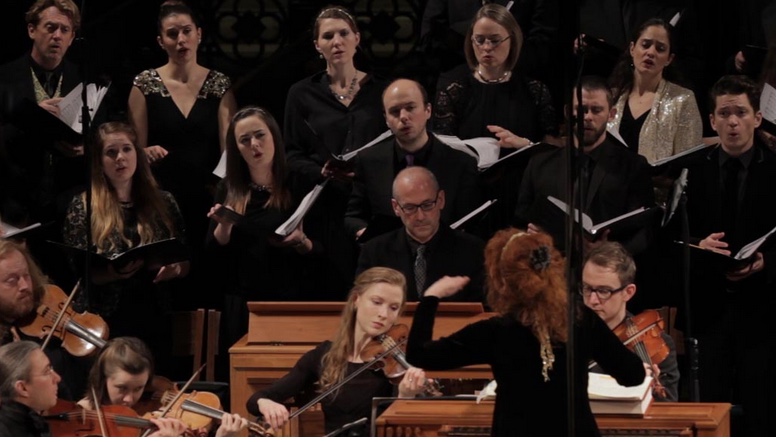by Peter Feher

Performances of the Easter Oratorio don’t exactly abound every year, and the reason is less than straightforward. Staging the work is something of a production, approaching the monumental scale of similar Bach compositions — the Passions, the B-Minor Mass, the Christmas Oratorio — but nowhere near as imposing. This contrast has meant that a great piece of music has sometimes been treated as not quite great enough.
Which is a shame because the Easter Oratorio is one of Bach’s most consistently uplifting scores. While a modicum of doubt does creep into the composer’s setting of the Sunday scene at Jesus’ empty tomb, the music doesn’t communicate the deep, tortured anguish that characterizes so much of Bach’s other religious writing.
You could attribute the change to the miracle in question, but a nonreligious explanation would also do. The program that Apollo’s Fire and artistic director Jeannette Sorrell conceived to complement the oratorio acknowledged a secular angle, though this hardly diminished the glory of the music itself. The concert’s first half featured Bach’s Cantata BWV 66 and a movement from Cantata BWV 42 — both composed for celebrations around Easter but incorporating inspiration from elsewhere.
In fact, the Easter Oratorio and Cantata 66 started life as secular works, written to commemorate a duke’s birthday and a prince’s birthday, respectively (and repurposed thereafter). On the subject of origins, Bach actually called very few of his compositions “cantatas” (a label they only later acquired), preferring instead the term “concerto,” which suggested a greater independence of instrumental and vocal parts.
This is all to say that a festive, virtuosic spirit coursed through every piece Apollo’s Fire presented. From the beginning of Friday’s performance at St. Raphael Catholic Church in Bay Village, the dialogue between soloists and ensemble was on brilliant display. Conducting from the organ, Sorrell led a breezy reading of the Sinfonia from Cantata 42, which put the spotlight on the orchestra’s two oboes and bassoon.
The vocalists were the stars of Cantata 66, which opened with the joyous declaration of “Erfreut euch, ihr Herzen” (Rejoice, my heart’s spirit) from Apollo’s Singers. Uncertainty never stood a chance, though tenor Lawrence Wiliford and countertenor Aryeh Nussbaum Cohen (in his Apollo’s Fire debut) made a moving show of the cantata’s centerpiece, an extended duet between Hope and Fear, as allegorically embodied by the two men. Baritone Edward Vogel sang the preceding aria with equal aplomb.
Trumpets and drums added to the fanfare of the Easter Oratorio, which impressed in both its big orchestral passages and quieter moments of reflection. Cohen demonstrated exceptional dynamic range and control in the role of Mary Magdalene, at one point crescendoing on the word “distressed” to a terrifying degree. The English singing translation simply served the emotion here, as it also did in poignant arias performed by Wiliford as Peter and soprano Andréa Walker as Mary, Mother of James. Vogel rounded out the quartet of soloists as John, raising his voice for the brief recitative before the final chorus, which saw everyone united again in the expression of something greater.
Published on ClevelandClassical.com May 2, 2024
Click here for a printable copy of this article



